Chao-I Tuan
MITAS: A Compressed Time-Domain Audio Separation Network with Parameter Sharing
Dec 09, 2019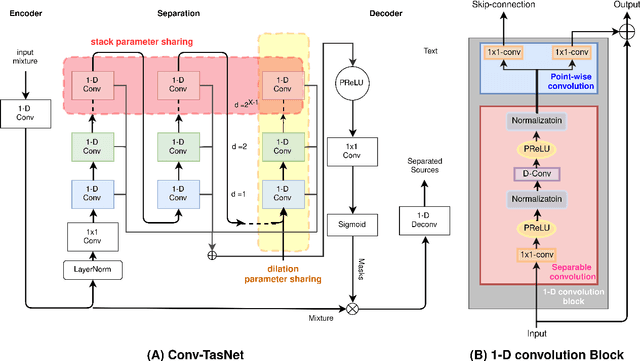
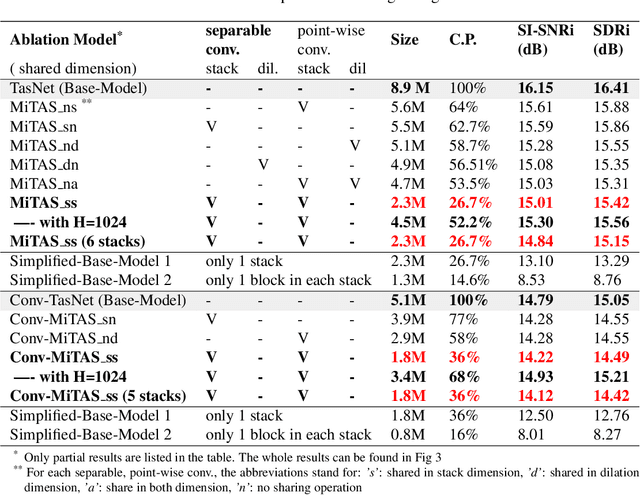
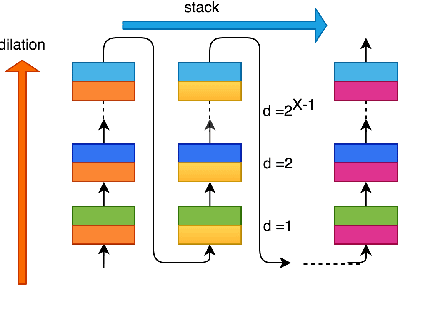
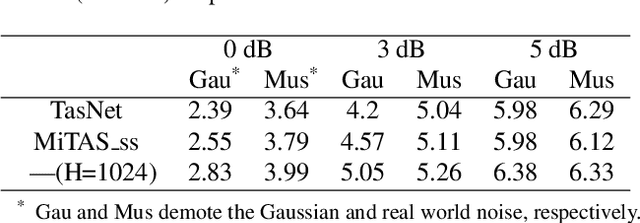
Abstract:Deep learning methods have brought substantial advancements in speech separation (SS). Nevertheless, it remains challenging to deploy deep-learning-based models on edge devices. Thus, identifying an effective way to compress these large models without hurting SS performance has become an important research topic. Recently, TasNet and Conv-TasNet have been proposed. They achieved state-of-the-art results on several standardized SS tasks. Moreover, their low latency natures make them definitely suitable for real-time on-device applications. In this study, we propose two parameter-sharing schemes to lower the memory consumption on TasNet and Conv-TasNet. Accordingly, we derive a novel so-called MiTAS (Mini TasNet). Our experimental results first confirmed the robustness of our MiTAS on two types of perturbations in mixed audio. We also designed a series of ablation experiments to analyze the relation between SS performance and the amount of parameters in the model. The results show that MiTAS is able to reduce the model size by a factor of four while maintaining comparable SS performance with improved stability as compared to TasNet and Conv-TasNet. This suggests that MiTAS is more suitable for real-time low latency applications.
Improved Speech Separation with Time-and-Frequency Cross-domain Joint Embedding and Clustering
Apr 16, 2019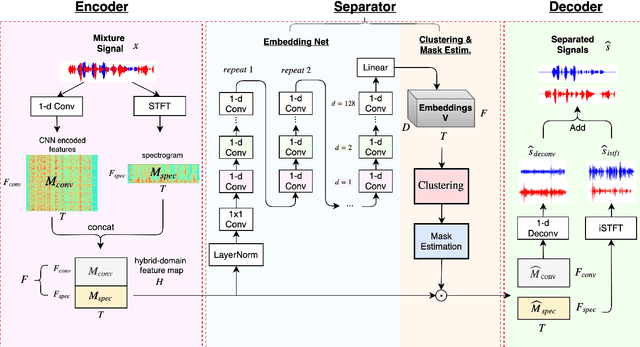
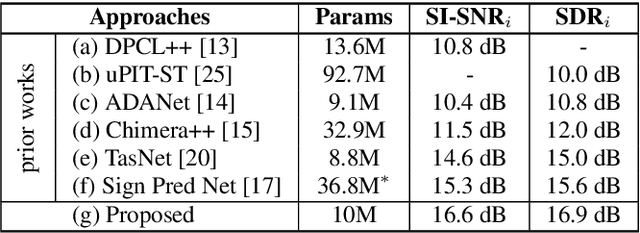
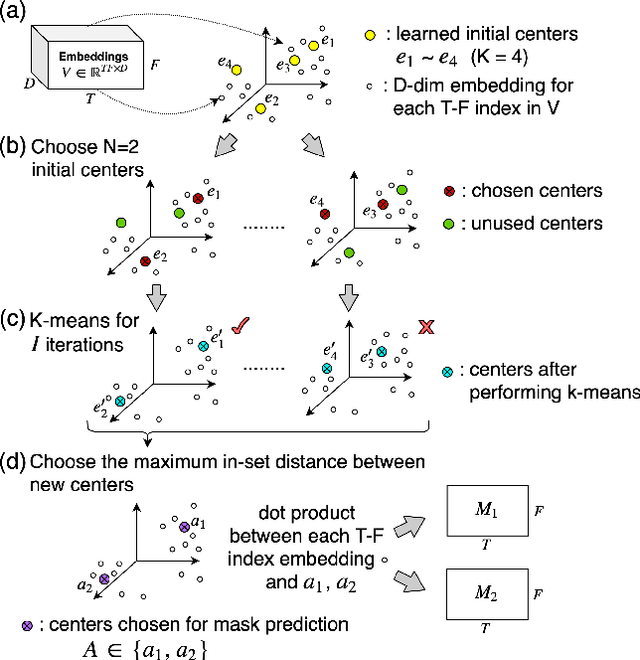
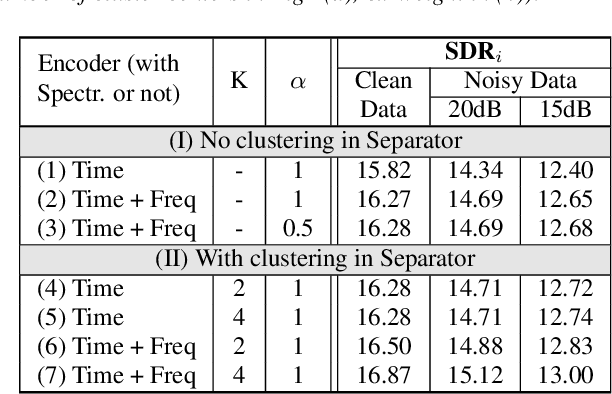
Abstract:Speech separation has been very successful with deep learning techniques. Substantial effort has been reported based on approaches over spectrogram, which is well known as the standard time-and-frequency cross-domain representation for speech signals. It is highly correlated to the phonetic structure of speech, or "how the speech sounds" when perceived by human, but primarily frequency domain features carrying temporal behaviour. Very impressive work achieving speech separation over time domain was reported recently, probably because waveforms in time domain may describe the different realizations of speech in a more precise way than spectrogram. In this paper, we propose a framework properly integrating the above two directions, hoping to achieve both purposes. We construct a time-and-frequency feature map by concatenating the 1-dim convolution encoded feature map (for time domain) and the spectrogram (for frequency domain), which was then processed by an embedding network and clustering approaches very similar to those used in time and frequency domain prior works. In this way, the information in the time and frequency domains, as well as the interactions between them, can be jointly considered during embedding and clustering. Very encouraging results (state-of-the-art to our knowledge) were obtained with WSJ0-2mix dataset in preliminary experiments.
 Add to Chrome
Add to Chrome Add to Firefox
Add to Firefox Add to Edge
Add to Edge